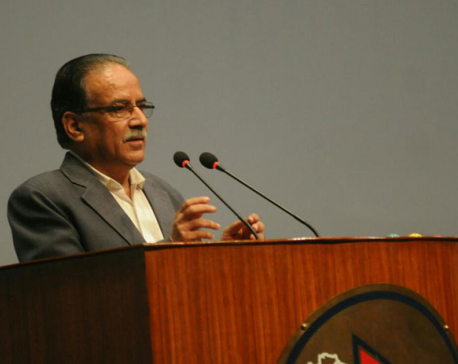
OR
Vehicle-free zones
From the Mall Road in Shimla, India to the Cornmarket Street in Oxford, England; from Cheung Chau island in Hong Kong to the Ithaca Commons in New York—one thing you are guaranteed in these tourist hotspots is clean air. This is because they are all vehicle-free zones, just like our Bhaktapur and Thamel. The rule is rather weakly enforced in Bhaktapur but the authorities in Kathmandu seem more serious about enforcing the vehicle-ban in the heart of Thamel. This epicenter of foreign tourists in Kathmandu is buzzing these days, as total arrivals to Nepal via air this year is expected to cross the magical one million mark. Being allowed to walk freely, without the constant honking of vehicles, and without having to inhale their toxic exhaust, has added to the allure of Thamel. Considering the widespread support for the ongoing no-vehicle campaign, it makes sense to impose the rule in all of Thamel, rather than only in select streets. And why stop at Thamel? There is a strong case for making the whole stretch from Basantapur to Thamel a vehicle-free zone. Zooming vehicles in these clogged alleys are great nuisance, and accidents are common.
Similarly, as the city slowly comes back to life following the 2015 earthquakes, the vehicle-ban on Bhaktapur should be strictly enforced. These vehicle-bans to protect our tourist hotspots have become important given the rapidly increasing numbers of fossil fuel-powered vehicles in the valley. Yes, most of the valley’s main thoroughfares have been expanded over the last decade or so. But traffic jams are getting worse, as is the problem of air pollution. Kathmandu valley currently has one of the worst cases of air pollution in the world. The air we breathe would be cleaner by a magnitude if only the seemingly interminable works on Melamchi drinking water project came to a definite end. The other way, of course, is to promote cleaner electric vehicles and to impose select vehicle-bans. Again, in the case of Thamel, it makes sense to eventually declare the whole area vehicle-free, as the areas that are now banned for vehicles are not substantially different—with the same constellation of curio shops and restaurants and travel agencies—to the areas in which vehicles are allowed. It would be unfair both to the tourists (who are limited to a very small area) as well as the businesses in the no-ban areas (with comparably fewer tourists to cater to) to selectively impose the ban.
It is amazing to see so many tourists coming to Nepal after the near-death experience of Nepali tourism following the 2015 earthquakes and the subsequent Indian blockade. Indeed, with the prolonged political transition coming to a definite end, and with the implementation of the new constitution, the prospects for Nepali tourism look bright. This is all the more reason to improve the state of our airports and roads and tourist hotspots so that Nepal can continue to welcome more and more tourists and to continue to give them reasons to come back and to tell their friends and relatives to also go visit the Himalayan paradise.
You May Like This

A more pragmatic Dahal's second PM innings more successful
KATHMANDU, May 25: Many had doubts about Pushpa Kamal Dahal when he assumed the office of prime minister for the second... Read More...

Democratic fighter Basnet no more
KATHMANDU, Sept 28: Nepali Congress leader and democratic fighter Shivadwoj Basnet passed away at the age of 96 last night... Read More...

Three more killed in landslide in Pyuthan
PYUTHAN, July 27: A landslide triggered by continuous rains since Monday buried five houses at Sim of Phopli-6 in Pyuthan,... Read More...




Just In
- Govt receives 1,658 proposals for startup loans; Minimum of 50 points required for eligibility
- Unified Socialist leader Sodari appointed Sudurpaschim CM
- One Nepali dies in UAE flood
- Madhesh Province CM Yadav expands cabinet
- 12-hour OPD service at Damauli Hospital from Thursday
- Lawmaker Dr Sharma provides Rs 2 million to children's hospital
- BFIs' lending to private sector increases by only 4.3 percent to Rs 5.087 trillion in first eight months of current FY
- NEPSE nosedives 19.56 points; daily turnover falls to Rs 2.09 billion















Leave A Comment